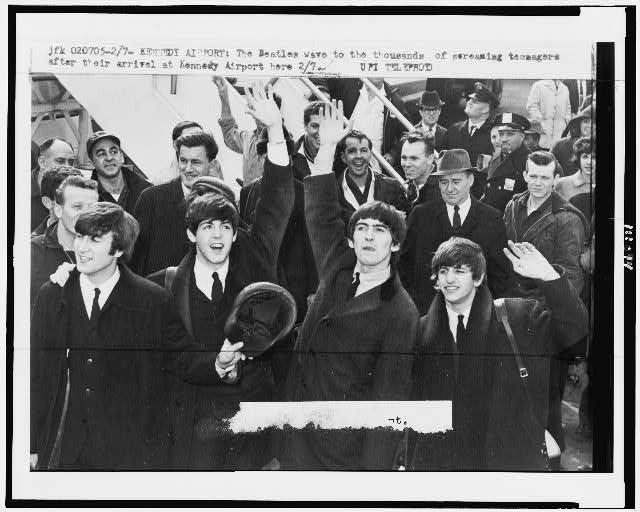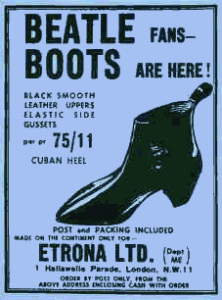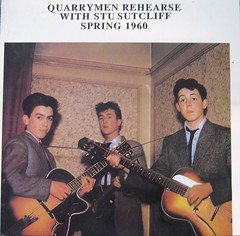What if the Beatles had attended tradeshows?
Yeah, Yeah, Yeah, it’s a crazy idea. Why in the world would the Beatles in their heyday, ever consider exhibiting at tradeshows? They already owned the music world. What could be gained from setting up a booth?
But let’s consider. Say their manager, Brian Epstein, convinced them they should show up at a booth pushing their products in 1965 at NAMM (I have no idea if NAMM actually had a show in 1965).
Brian: All right, boys. I’ve got you booked at NAMM.
Ringo: What’s NAMM?
John: Must be a bird with the gift of gob.
Paul: A Winglish man from the motor trade?
George: I humbly withdraw from this conversation.

RIngo: But George, you’ve only just begun. (aside: Hey, that’s not a bad song title).
George: I must tune my sitar, which will take me until October.
Brian: Boys, boys! The NAMM is a great historical foundation called National Association of Music Merchants, founded in 1901.
John: Righto! Before the history of music began. Except for me grand-father, singing on the canoes of Greenland (that’s where we turned left to find America). O, solo mio… (singing off mic)
Brian: In any case, if we appear we can help promote our albums.
Ringo: But we’re too busy making albums to promote them.
Paul: True, true. Just yesterday you told me you needed me to write 14 songs by Tuesday.
John: We’ve only written thirty-eight, so we have to throw out a couple of dozen to get anything good.
Brian: If you were to attend the show, you could not only play all of the latest and greatest musical gear –
George: Gear…
Ringo: Gear.
John: Gear!
Paul: McGear…
Brian: – you could have a jam session with some of the best musicians in the world. They all attend NAMM.
Silence. They all look around. No one says a thing.
Finally, John breaks the silence.
John: You seem to have unnerved us, Brian. Perhaps we can groan a bit at your suggestion and in your direction.
(all groan:) Oh, oh, oh, oh….
Brian: But if you have your own tradeshow booth, imagine what it might look like.
Paul: Lots of colors: black white green red pink brown yellow orange and blue…
Ringo: Let’s put a submarine in it!
John: Cap’n, cap’n!
George: Or we could hand out samples of truffles.
Paul: I’m hungry.
John: I want you.
Ringo: That’s so heavy.
Brian: So, it’s settled. A submarine with truffle samples, with all the colors of the rainbow.
John: That is heavy.
Brian: I’ll call the accountant and have the agency book our tickets.


